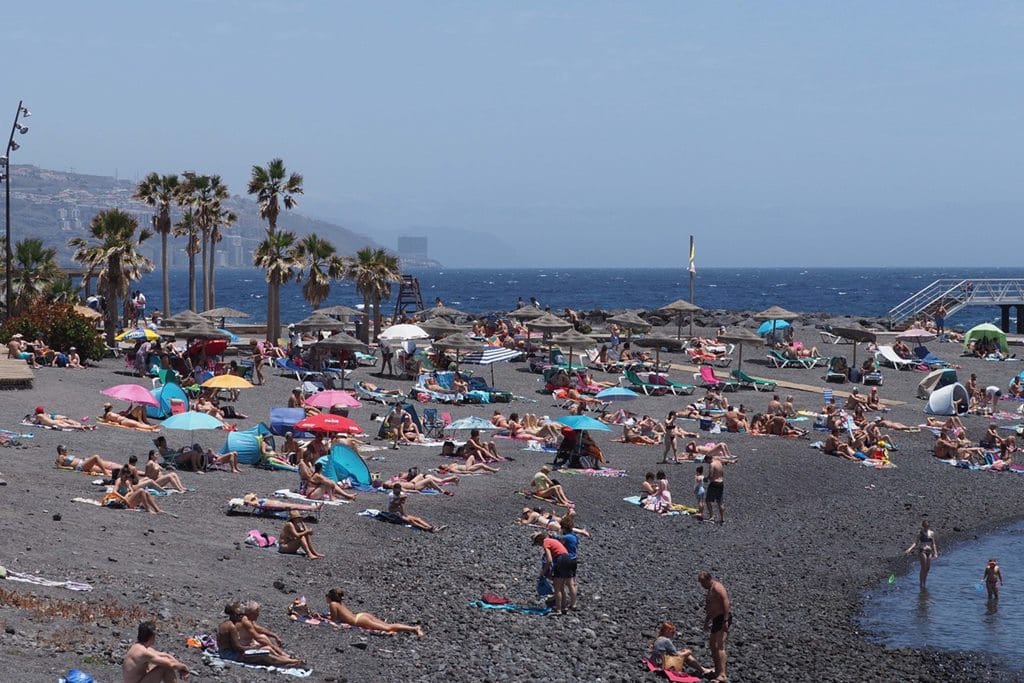The airlines have programmed 31,425,942 seats at Canary Islands airports for the summer season, which starts next Sunday 26 March and will last until 28 October 2023, figures that represent an increase of 8.4% compared to the same season in 2019, before the pandemic. Of this total, 16,757,988 seats correspond to international flights (+9%) and 14,667,954 to domestic flights (+8%).
According to AENA data on the number of commercial operations for the summer season, these are up 7% compared to 2019, totalling 228,144 movements, between scheduled arrivals and departures. The number of routes that the airlines have planned in the archipelago is 609, maintaining the same number as the 2019 summer season.
By number of scheduled seats, Gran Canaria Airport leads the way, with more than 8.8 million seats, 6% more than in 2019. Of these, more than 4.7 million are to/from other parts of Spain, almost 3.9 million to Europe and almost 223,000 to the African continent. In total, 44 airlines have scheduled 177 routes at the Gran Canaria airport. In the 66,228 planned movements, it will connect with 112 different destinations. By markets, after Spain, the largest number of seats offered are with the United Kingdom and Germany.
For its part, Tenerife South Airport has scheduled 155 routes operated by 45 airlines that will offer more than 7.2 million seats (12% more than in 2019). Of these, more than 6.4 million will be for European flights, 792,440 for domestic flights, 41,564 for flights to Africa and 16,350 for flights to North America. Airlines have scheduled more than 39,610 movements (+14.3%) to 92 destinations. By markets, the number of seats offered to the United Kingdom stands out, mainly to London and Manchester, followed by Spain and Germany.
This is followed by César Manrique-Lanzarote Airport, with more than 5.6 million scheduled seats (+17%). Of these, more than 3.4 million are for international flights and more than 2.1 million for domestic flights. In this case, 31 airlines have scheduled 118 routes, with more than 39,000 movements to 68 destinations. By markets, the number of seats with the rest of Spain, the United Kingdom, Ireland, Germany and France stands out.
As for Tenerife Norte-Ciudad de La Laguna Airport, 8 airlines have scheduled 41 routes, with 40,228 operations to 25 destinations. Of the more than 4.4 million seats offered (+2%), most of them are concentrated in domestic destinations, with 4,412,928 seats, followed by 33,096 with destination/origin Europe, almost 18,000 with Latin America and nearly 2,000 with Africa. By markets, the domestic market stands out with connections to Madrid, Gran Canaria and La Palma, followed by Portugal.
More than 3.9 million seats have been offered from Fuerteventura Airport, with an increase of 8% over the 2019 summer season, by 29 airlines that have scheduled 101 routes. More than 2.6 million seats are for international flights and more than 1.3 million for domestic flights. This season, 27,680 movements have been scheduled to 66 different destinations. By markets, the Spanish market stands out, followed by Germany and the United Kingdom.
For its part, La Palma Airport will have 14 routes. The 7 airlines operating this season will offer more than 1 million seats (-8%), with 941,994 for domestic flights and 58,148 for international flights. In total, they have planned 12,190 movements to 12 different destinations. Particularly noteworthy are the connections offered between the islands and with Madrid.
Finally, the airlines are offering 228,540 seats at El Hierro Airport with 3,172 planned movements, and 126,144 seats and 1,752 movements at La Gomera Airport, all of them to inter-island destinations.
SCHEDULING IS FLEXIBLE AND SUBJECT TO CHANGE
The schedule of seats and movements offered by the airlines for the 2023 summer season is prepared months in advance and is subject to change by the airlines.
It should be borne in mind that this schedule responds to the requests made by the airlines to operate at the airports and the number of seats they offer to passengers on these flights. Therefore, it is a question of seat and flight supply, not of real traffic data, since these are not obtained until the flights are operated and their occupancy is known.
During the two years of the pandemic, Aena provided the airlines with incentives designed specifically for the situation caused by COVID19 . Now, in view of the recovery of traffic, the company is recovering a commercial incentive similar to the one it offered to airlines before the pandemic. The incentive will apply from 1 April to 31 October (summer) and from 1 November to 31 March 2024 (winter).
This scheme incentivises new routes to unserved destinations, growth on routes at airports with less than 3 million passengers and growth on routes to Asia.
The incentive consists of the reimbursement of 100% of the airport passenger fare corresponding to the number of passengers of each company that opens routes to destinations not served by the airport or that grow (with respect to the previous equivalent season), on routes operating at airports with less than 3 million passengers or with destination Asia. The maximum number of passengers to be incentivised for each airline is capped by the number of passengers the airline grows at the airport and in the total network.






